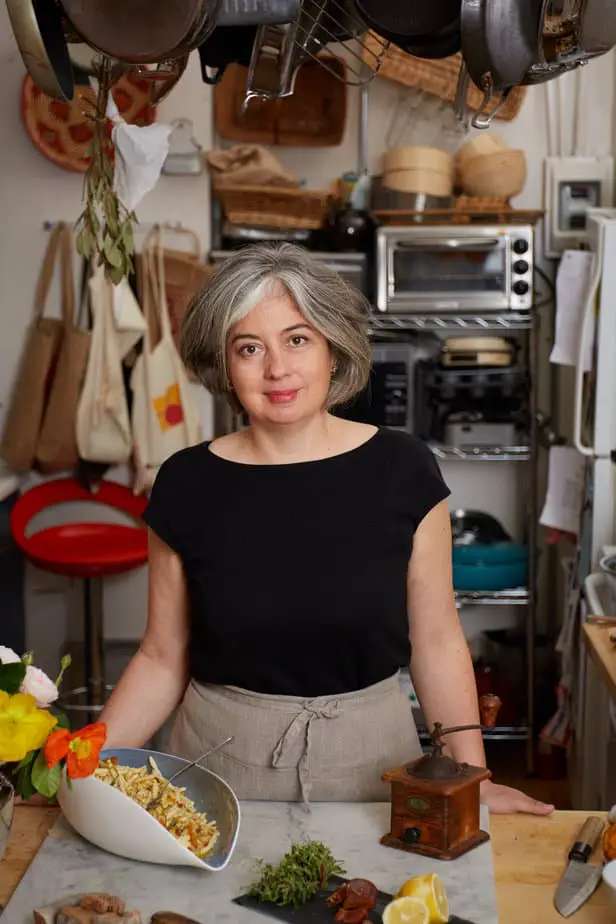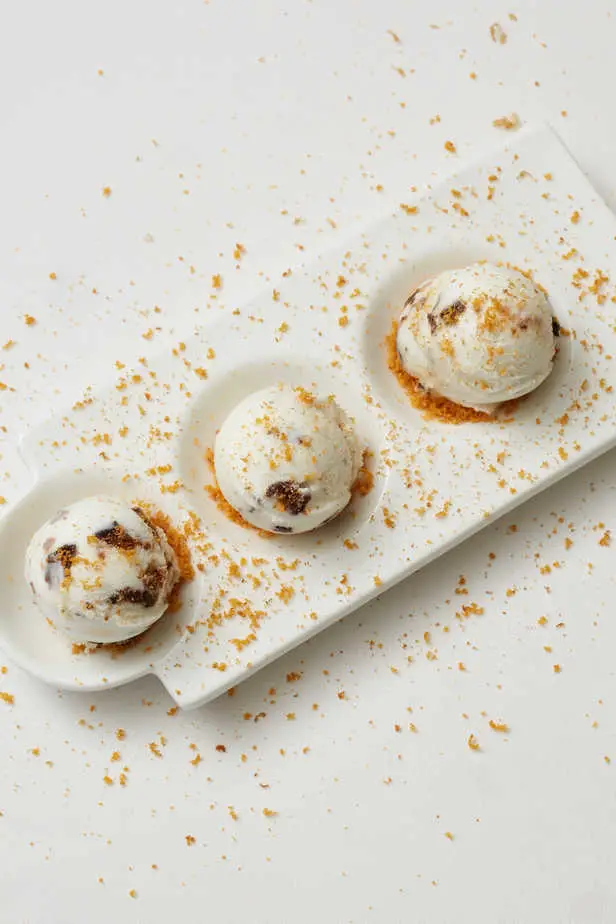Sacs of gray mullet roe were cured centuries ago as far as Libya. When Jewish people escaped from Africa in 1967, they brought this delicacy with them to Rome, as Katie Parla, explains in the book, “Tasting Rome.” While the fish have started to disappear in the Mediterranean, they are now plentiful in Brazil and in many areas in the United States, such as Florida and North Carolina, where they are sold for about three dollars a pound. In the traditional preparation, they are salted, pressed, and sun-dried. Bottarga is widely used grated like cheese; the extremely salty flavor has a distinct hint of sweetness, and the bright amber color awards a mouthwatering appearance to the dish.
“During a trip to Chapel Hill, I found this fisherman selling mullet roes that apparently nobody was paying attention to,” said Buitoni. “I bought them all. I start reading all the books about preparation: I put them under a sea salt solution and then I left in the refrigerator for about 5 days. Then you’ll need to leave them air-dry for about a week.”
Many ingredients can be combined with such a distinct flavor. “The classic [combination] is to pair it simply with pasta and a touch of olive oil,” Buitoni explained. “I’ve tried to use different vehicles to use it– the perfect match is delicate fat. I found that it would go just surprisingly perfect with pork. My latest recipe is loin with artichoke and peas. I’ve grated bottarga on top and obtained an extreme delicious combination of flavors.”
Not far from the Mission, a Sardinian restaurant called La Ciccia, in Noe Valley has declared “Spaghetti with Bottarga” the dish that cannot be missed while dining there. When opening its trattoria, the chef and owner Massimiliano Conti, who grew up in the southern part of Sardinia, knew that there is only a secret to maintain his success.
“Authenticity is the key,” he explained. This is why Conti selects bottarga that is made with the traditional method in Sardinia and only from small producers. “The level of excellence that artisans have reached in the Island is unbeatable. How somebody can compete with such acquaintance?”
Conti, whose restaurant consumes about tens of pounds of bottarga a week, uses two different types for his dishes.
“The softy, most young ones, more delicate, are used for appetizers such the classic pairing with just fresh cut celery while the more dry pieces that I let season for a few days are dedicated to the pasta, more incisive, distinct flavor,” he said.
// La Ciccia also sells his small-production mullet bottarga to the customers for about $11.50 an ounce. Some other vendors are: Bi-Rite, in the Mission, and Gustiamo (an online shopping retailer) for Italian delicacies; violasitaly.com, laciccia.com.
Photography by Sean Jerd.


